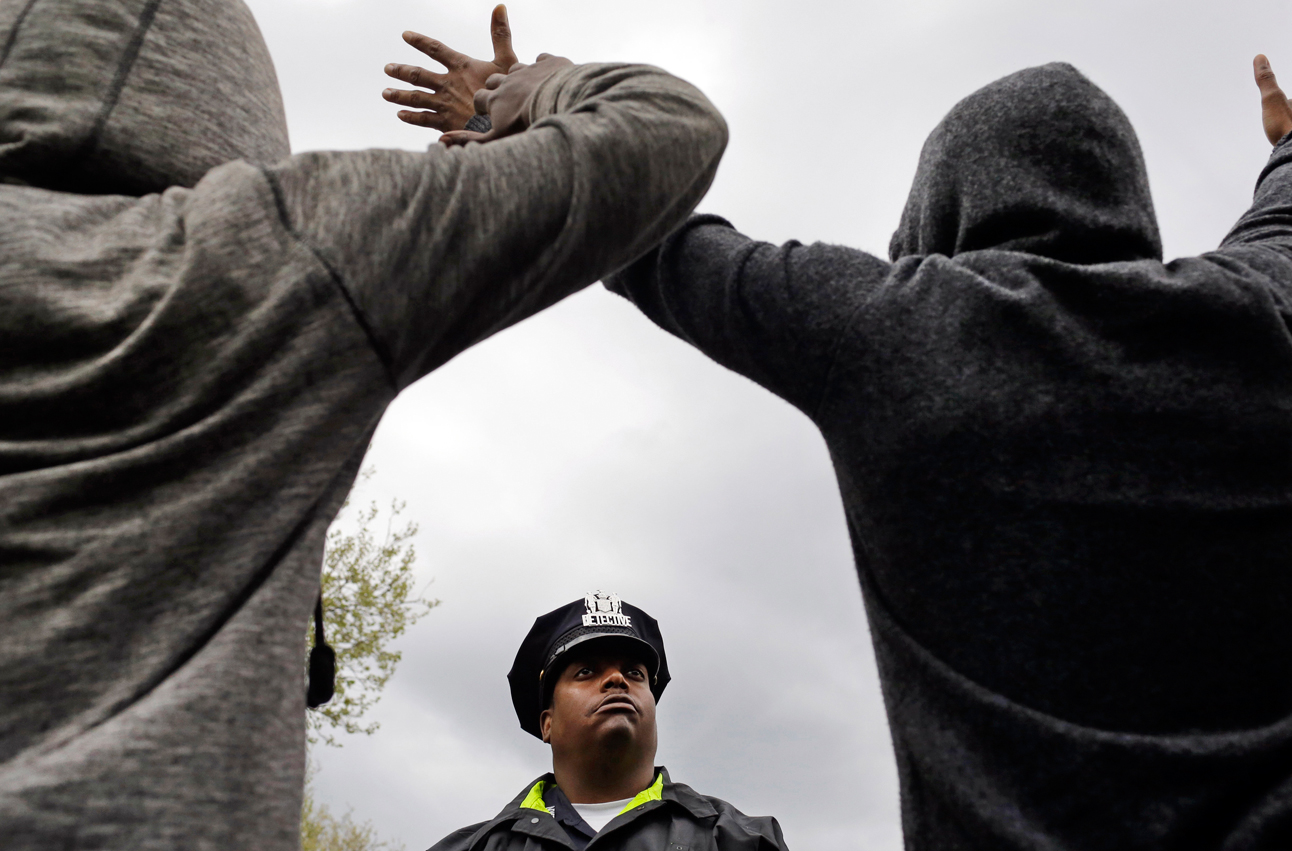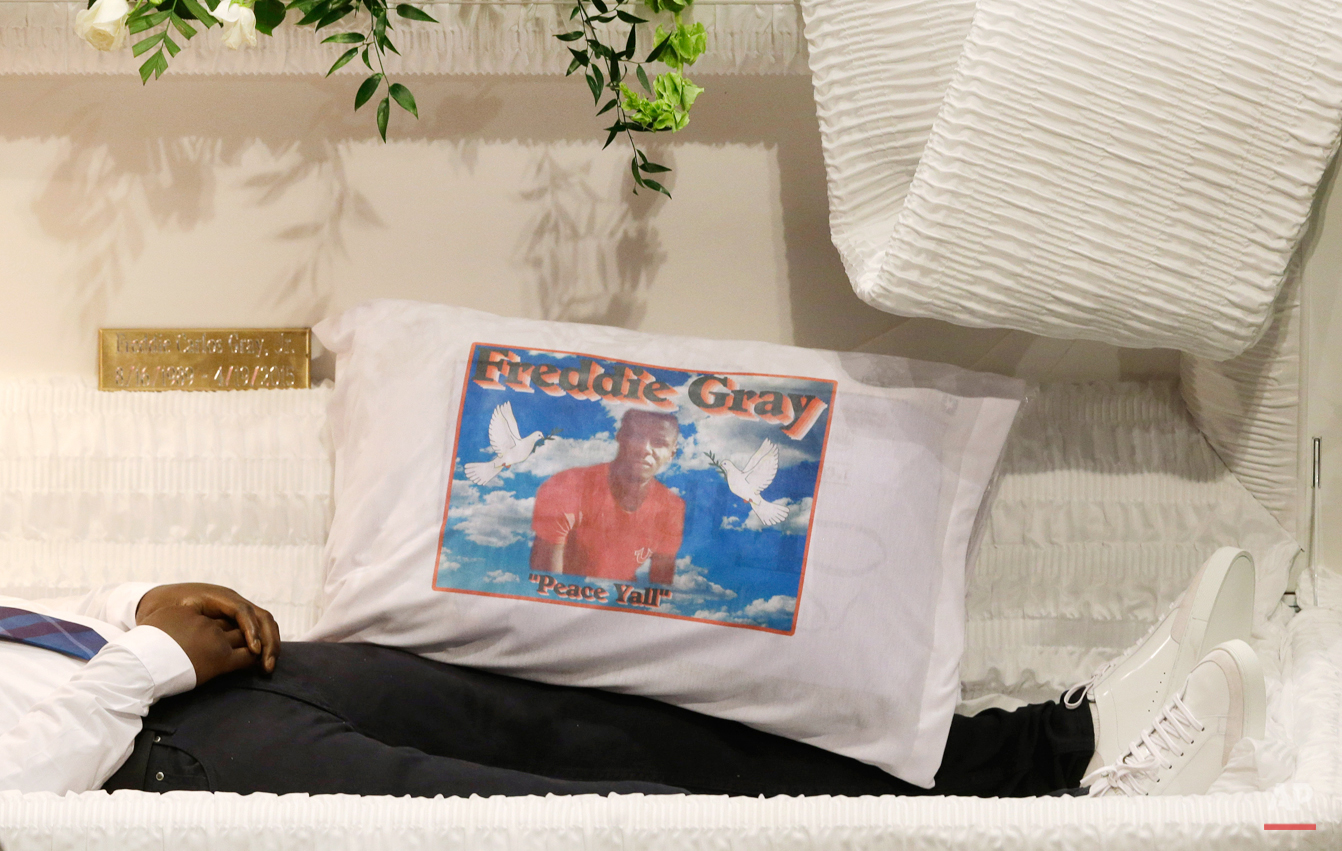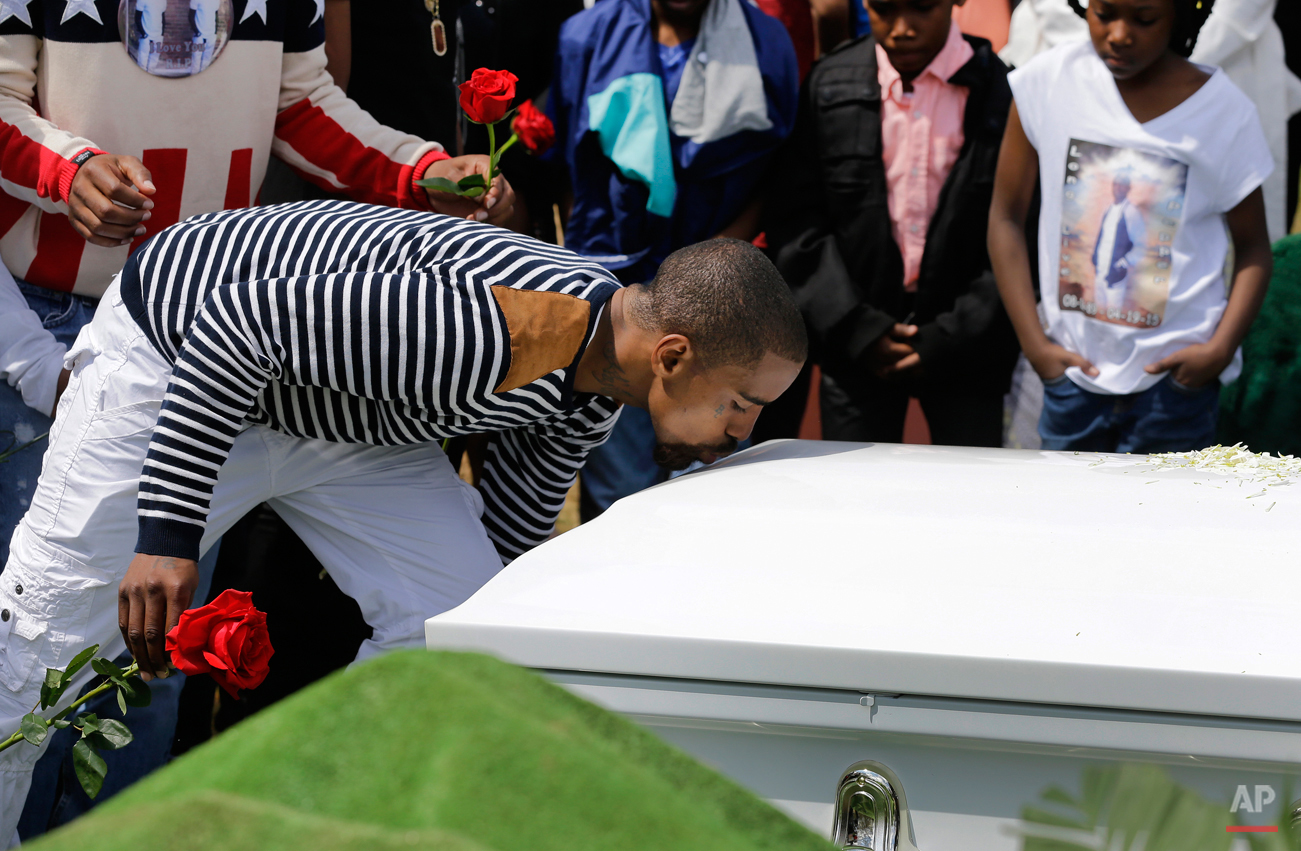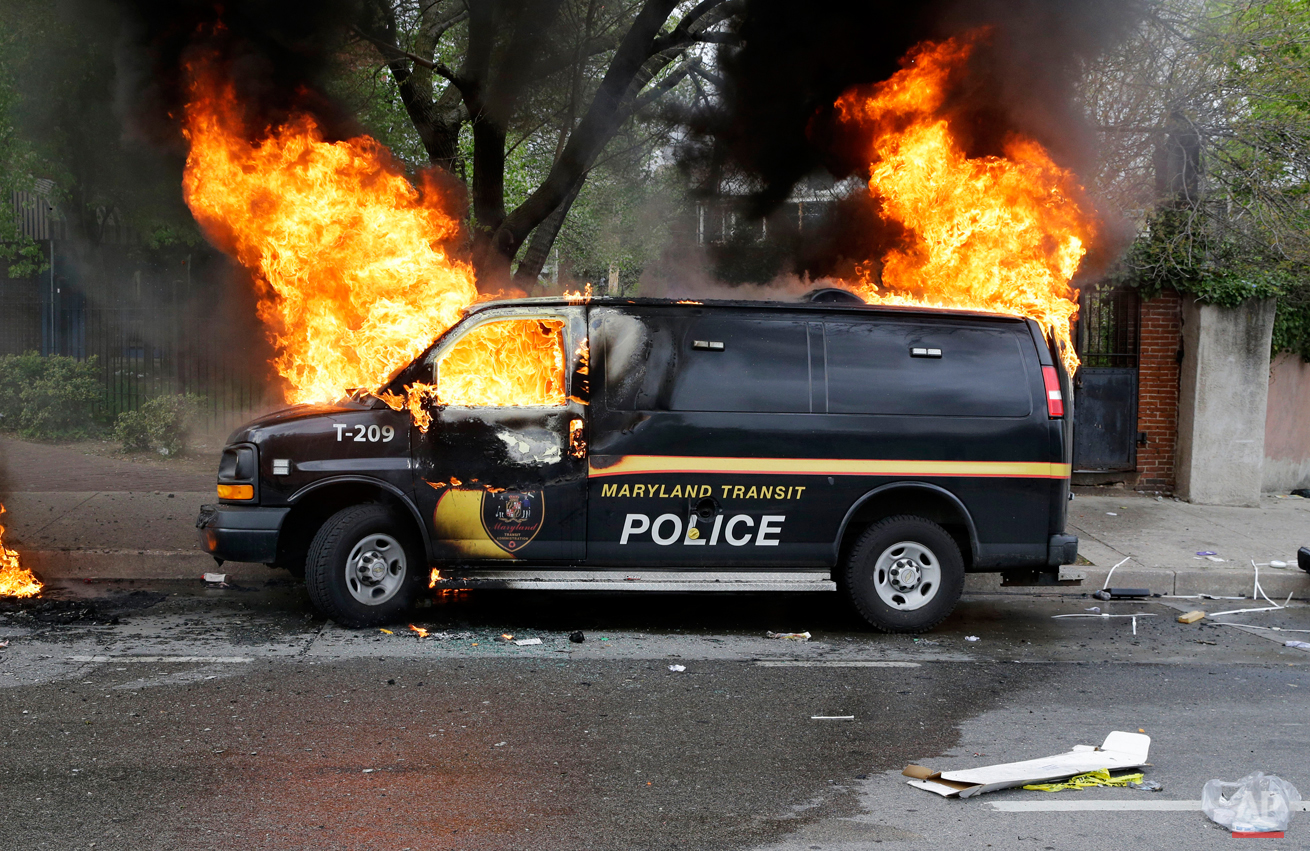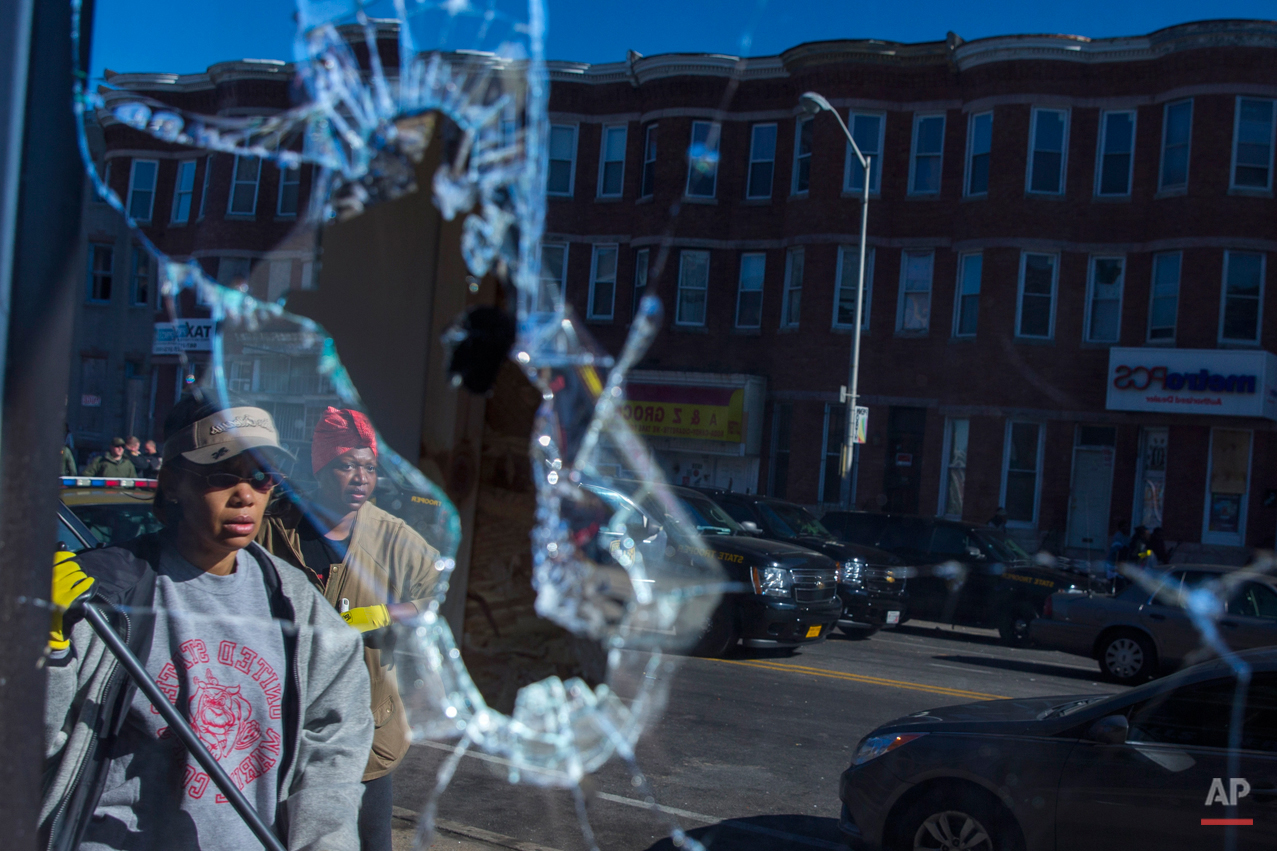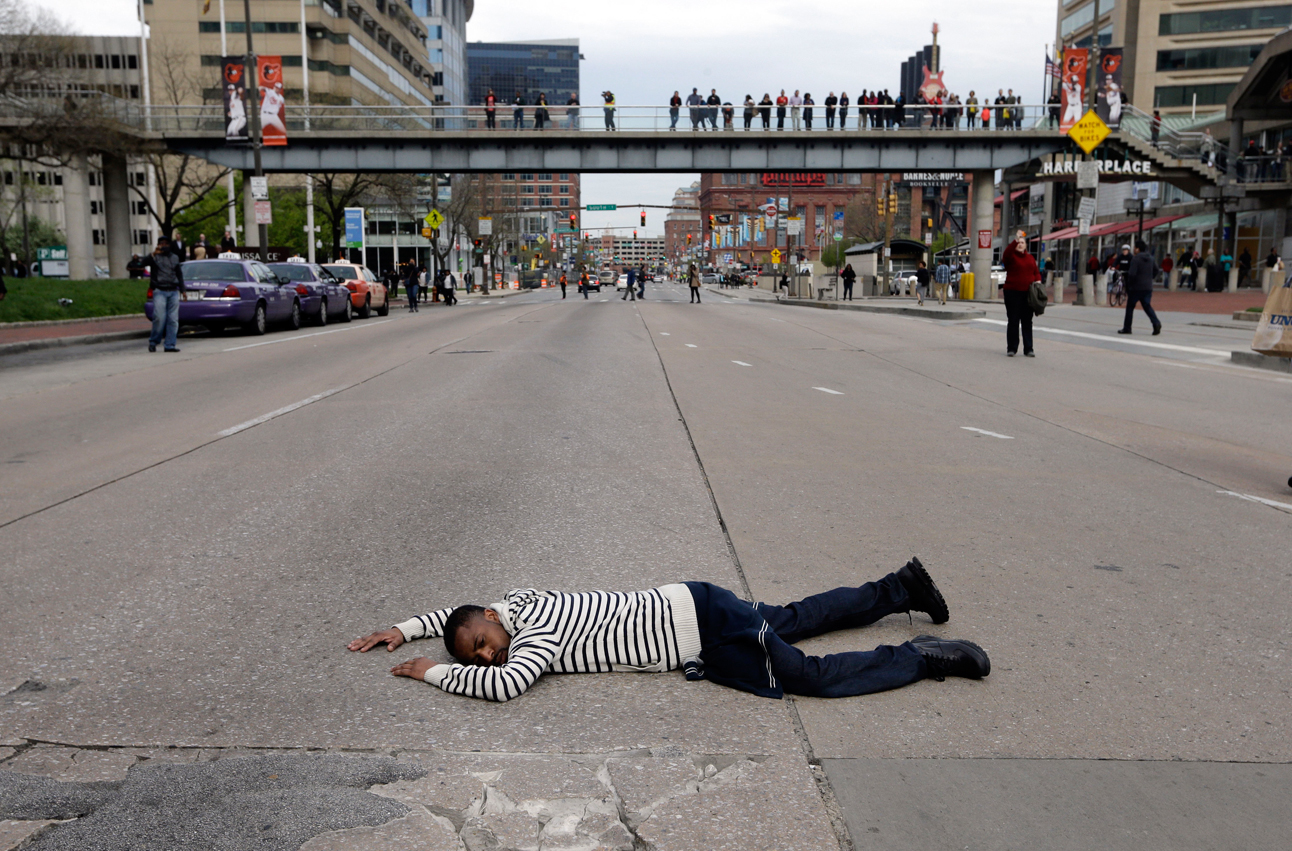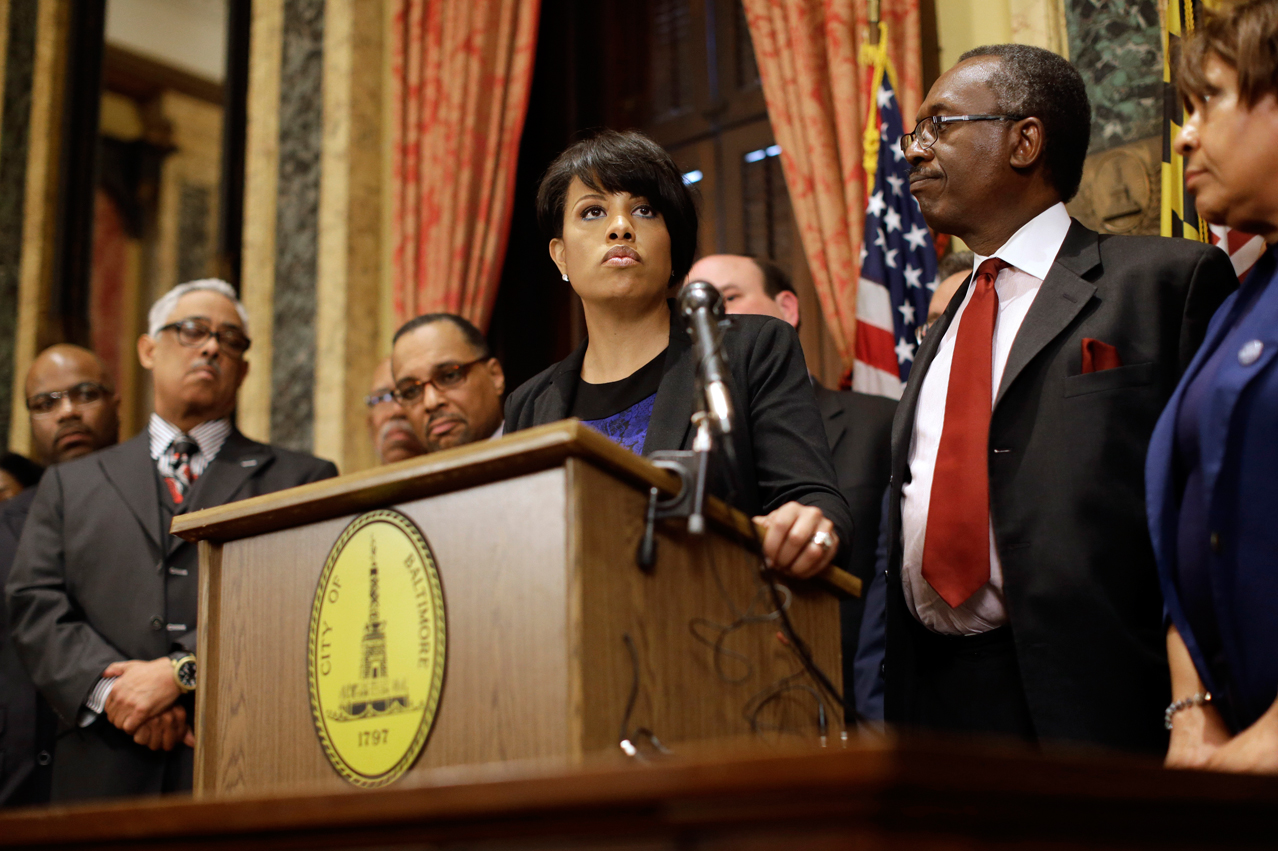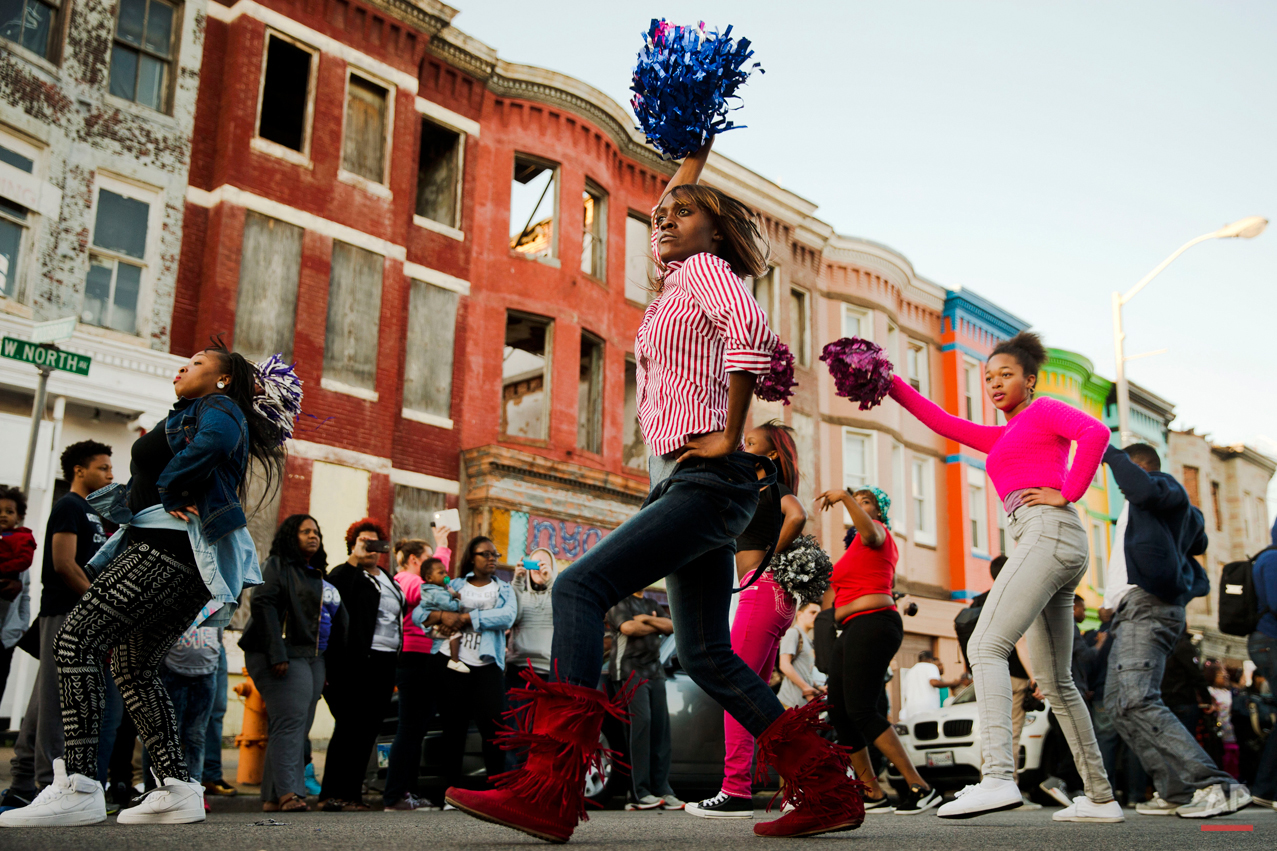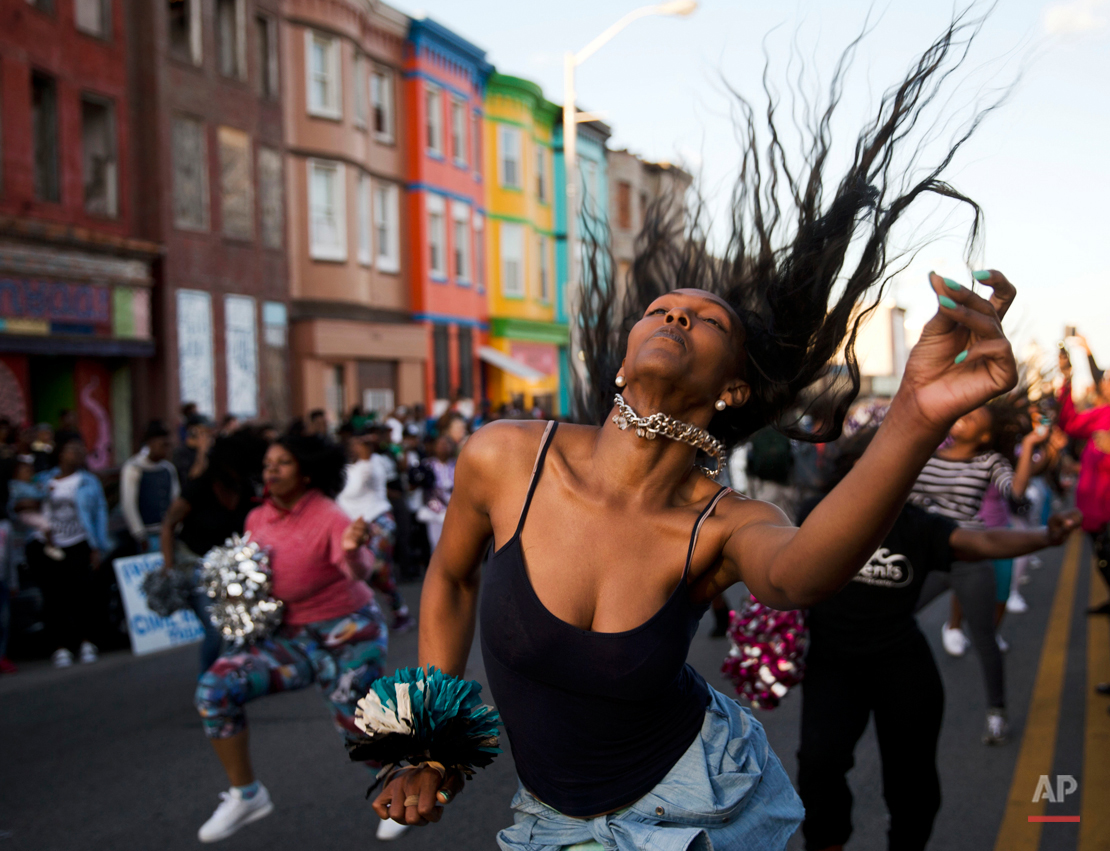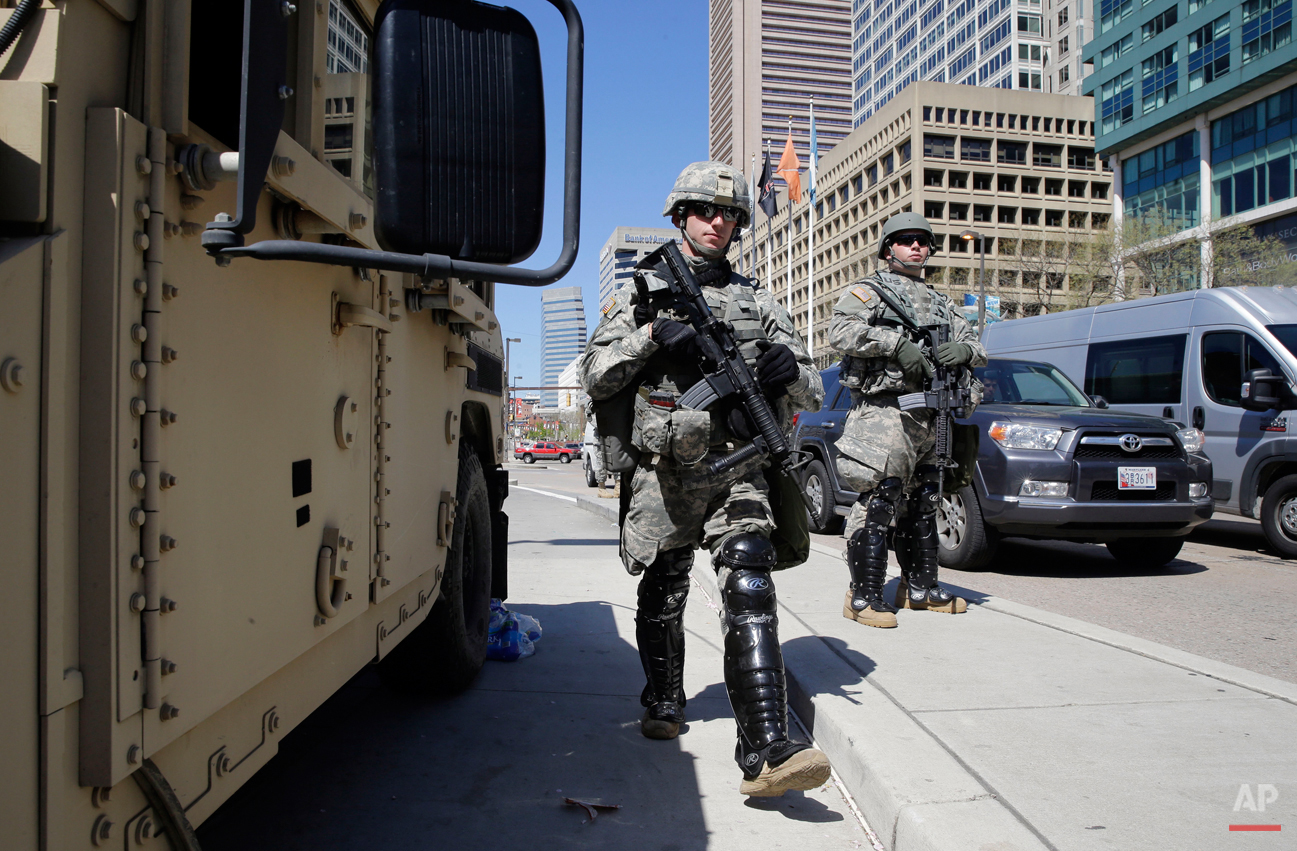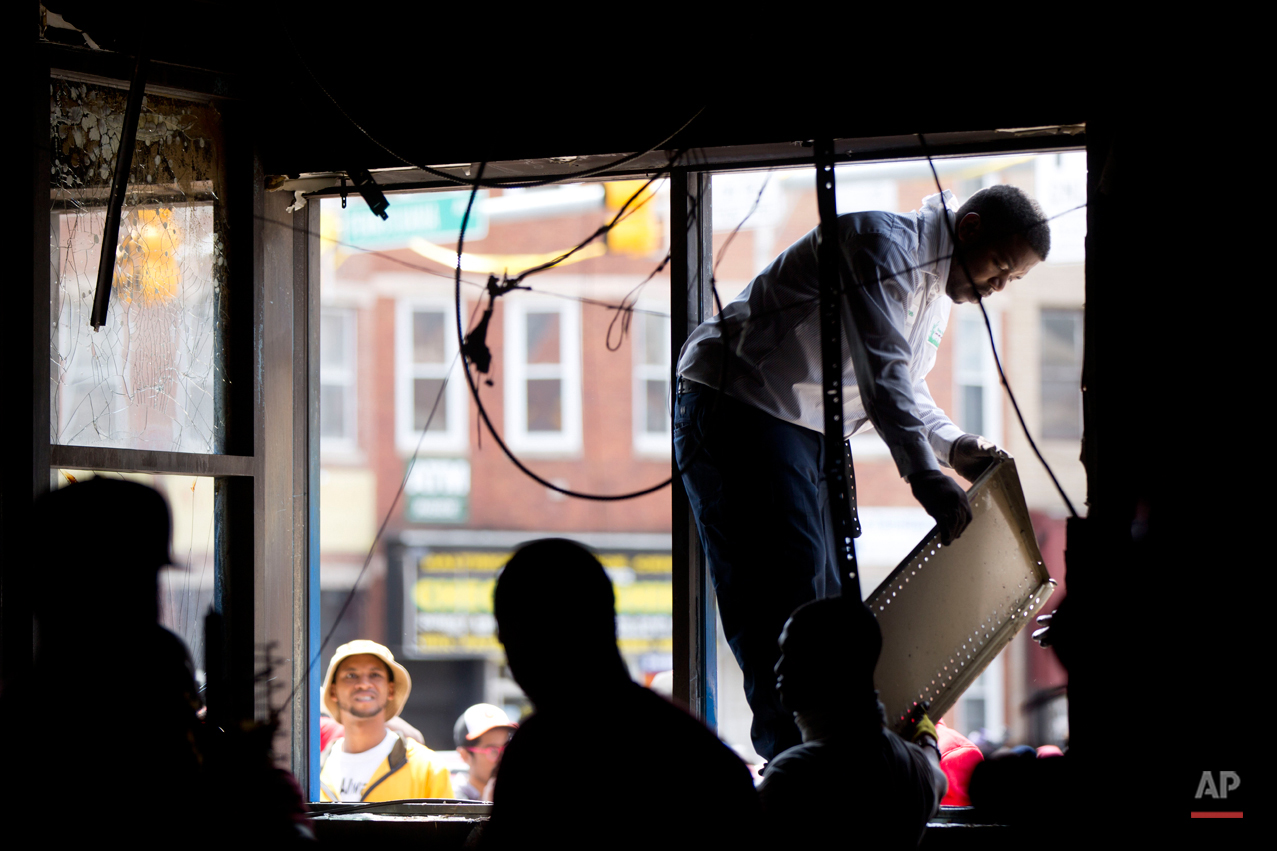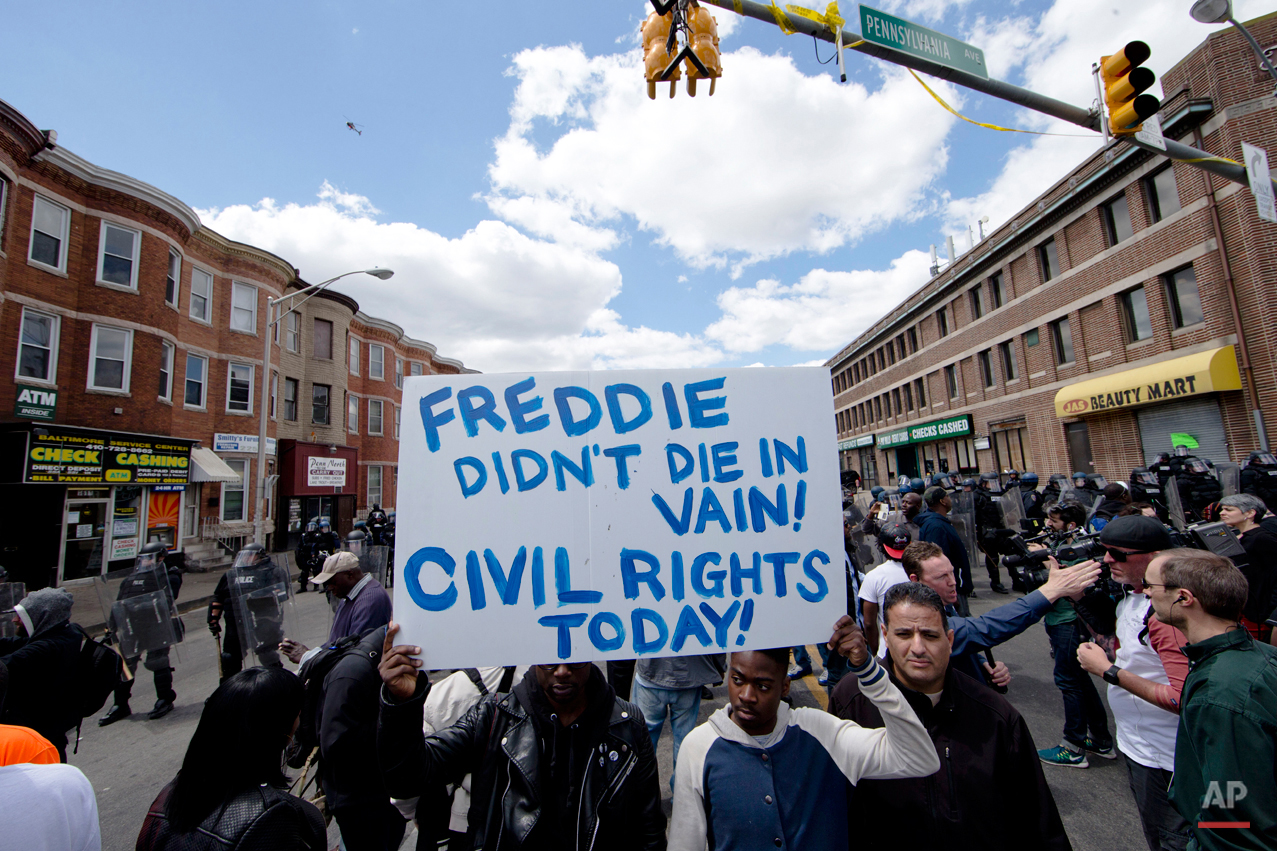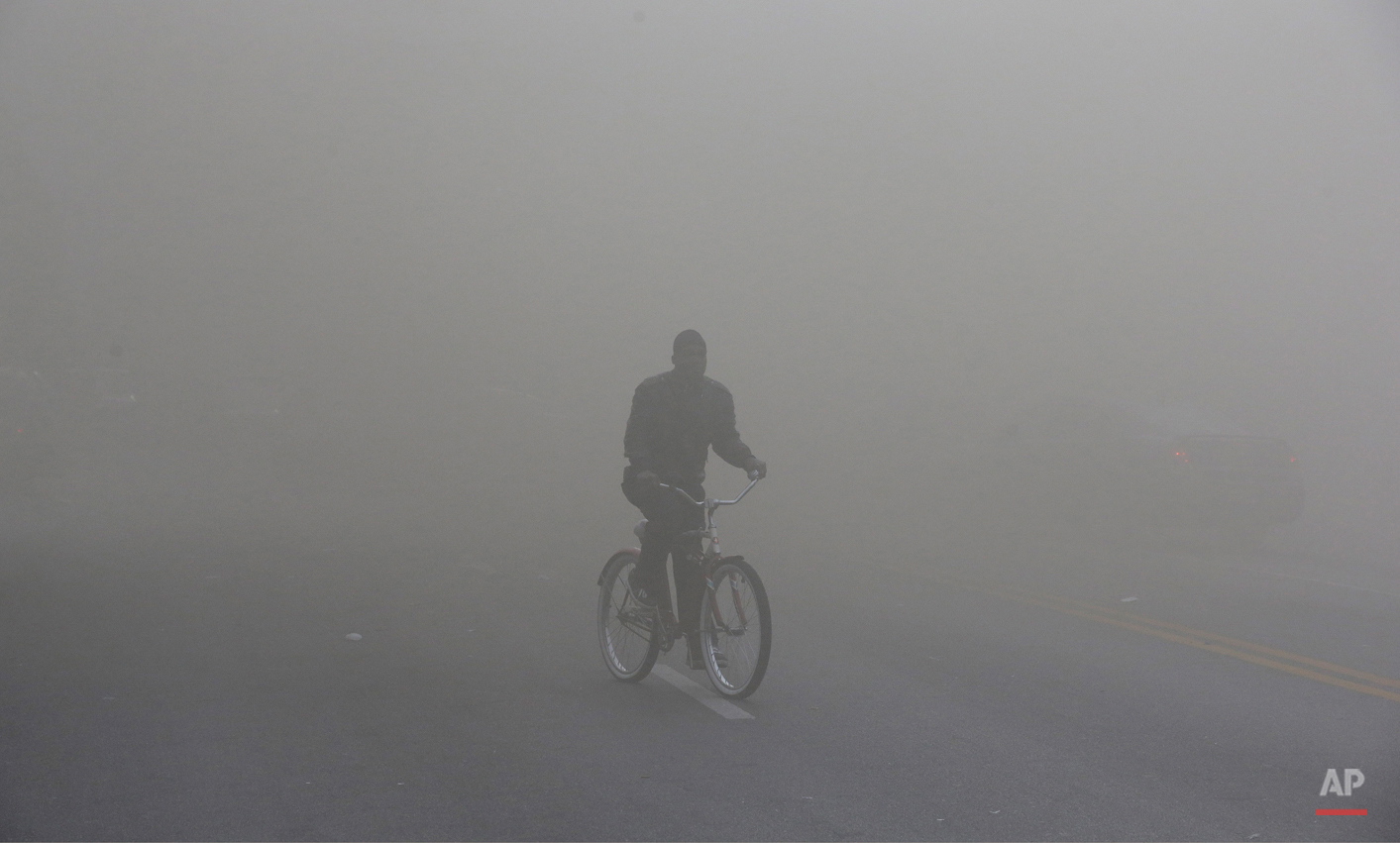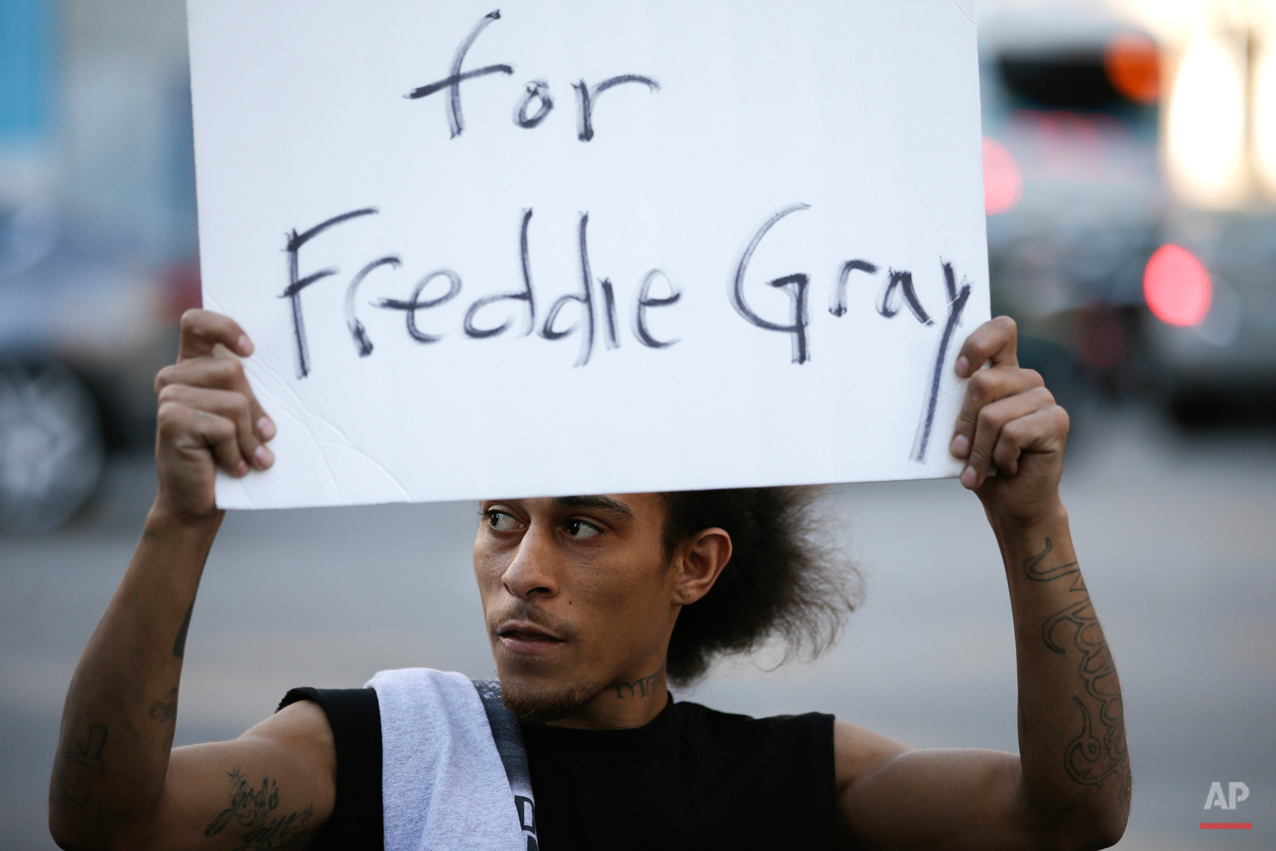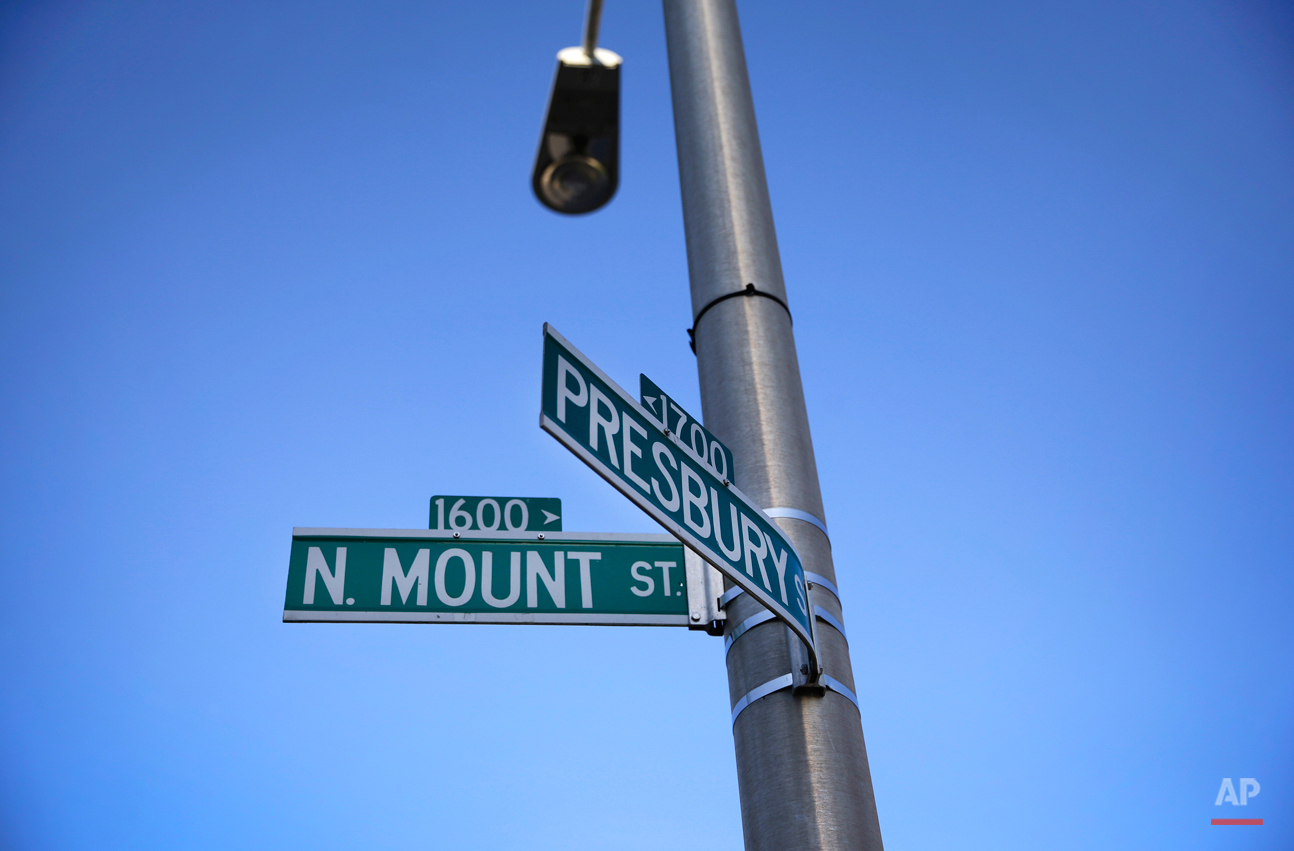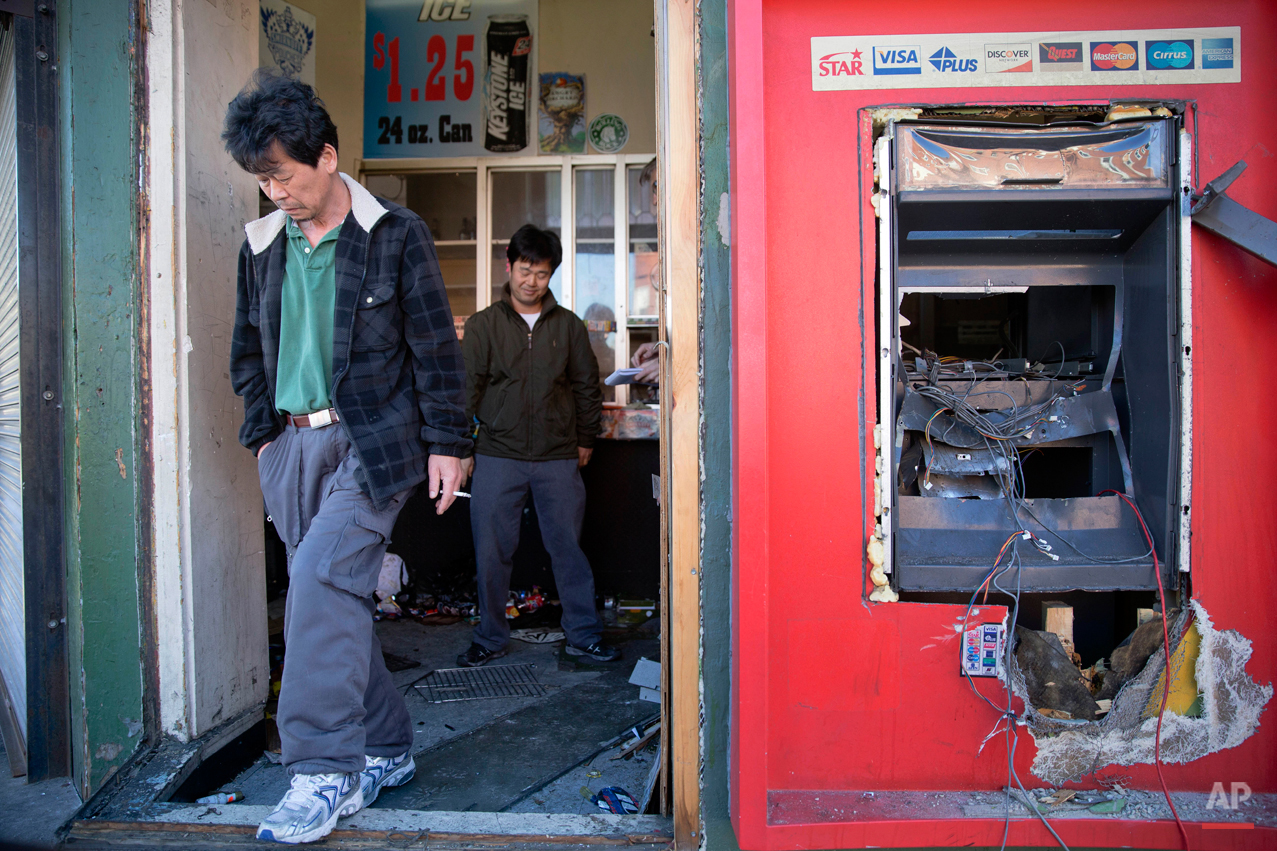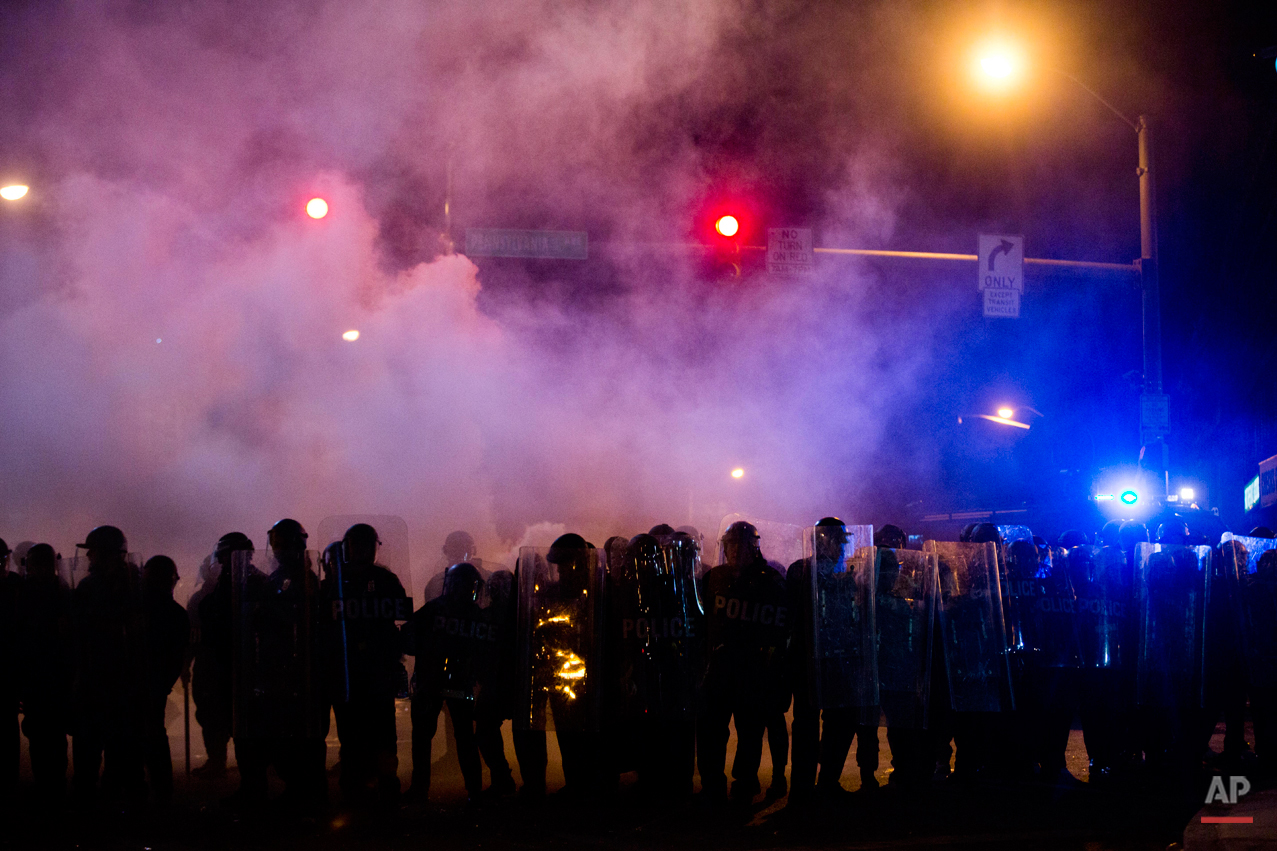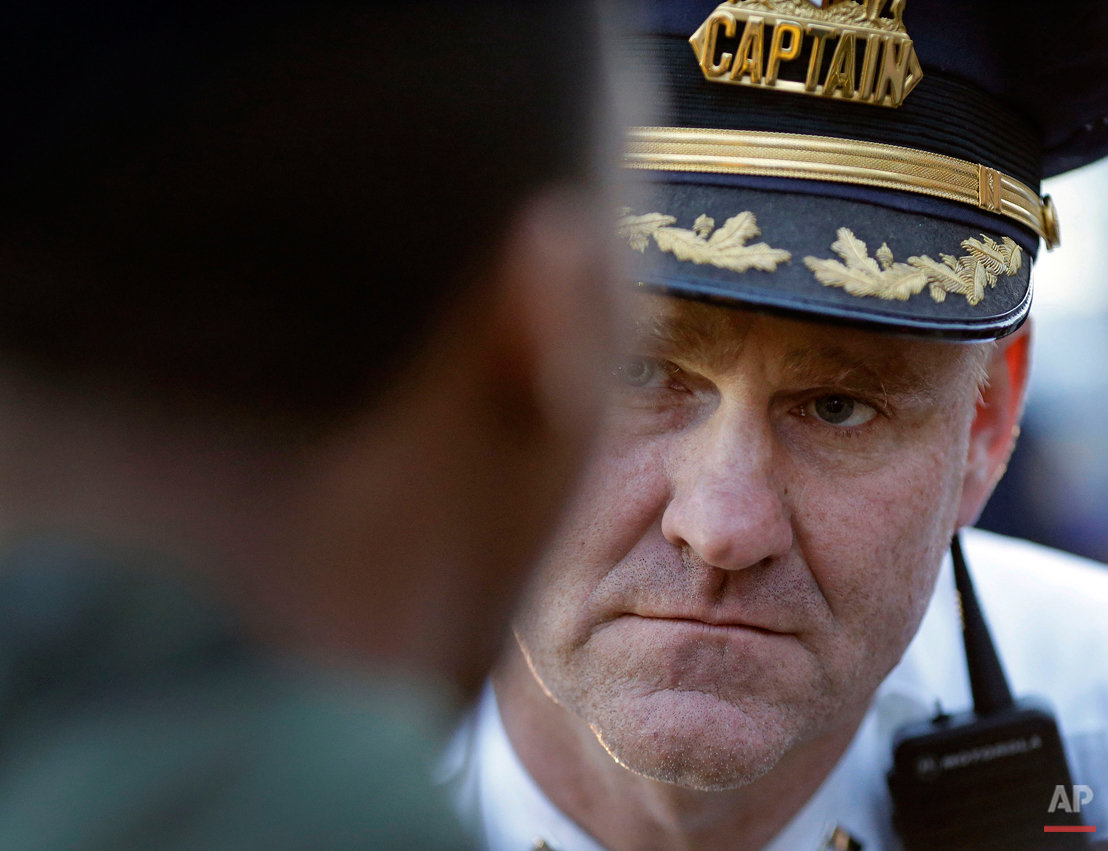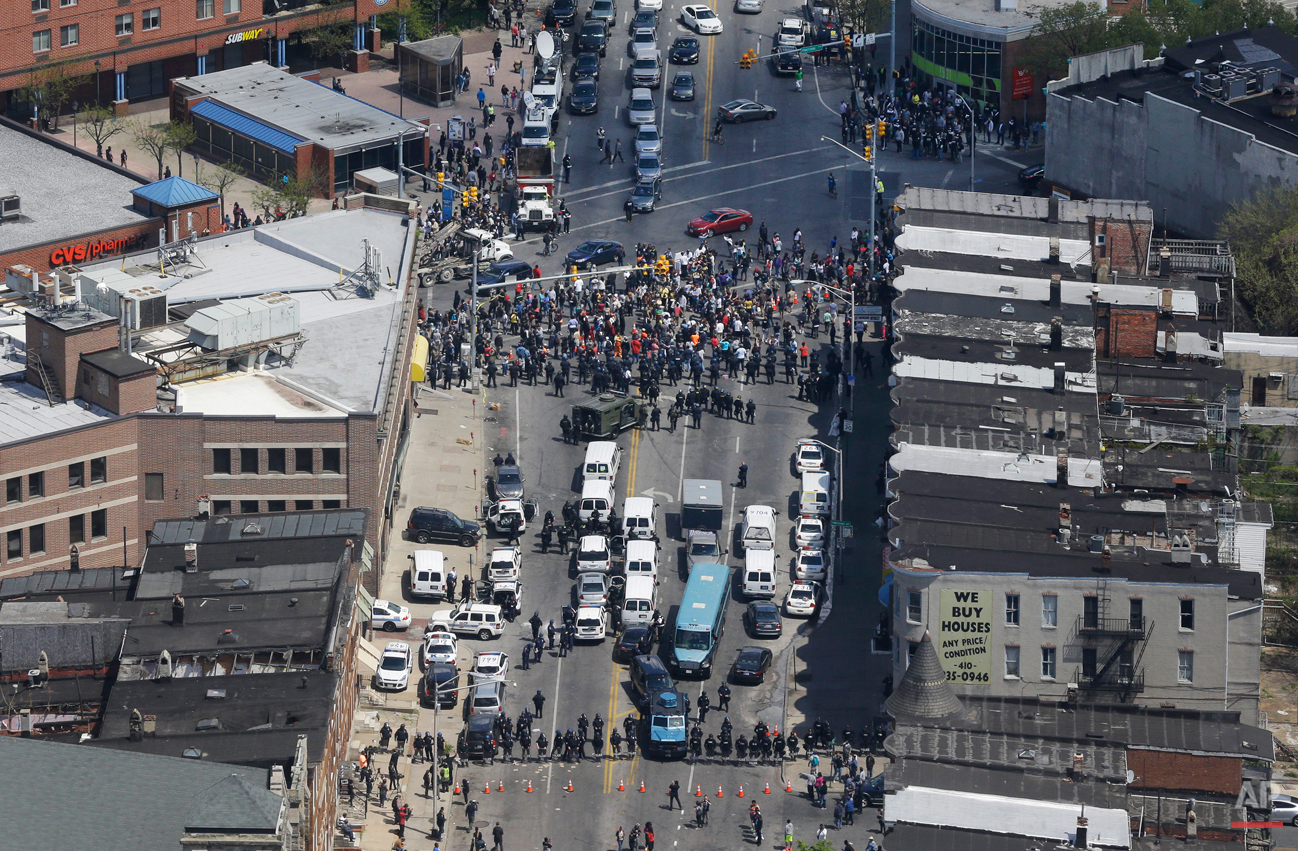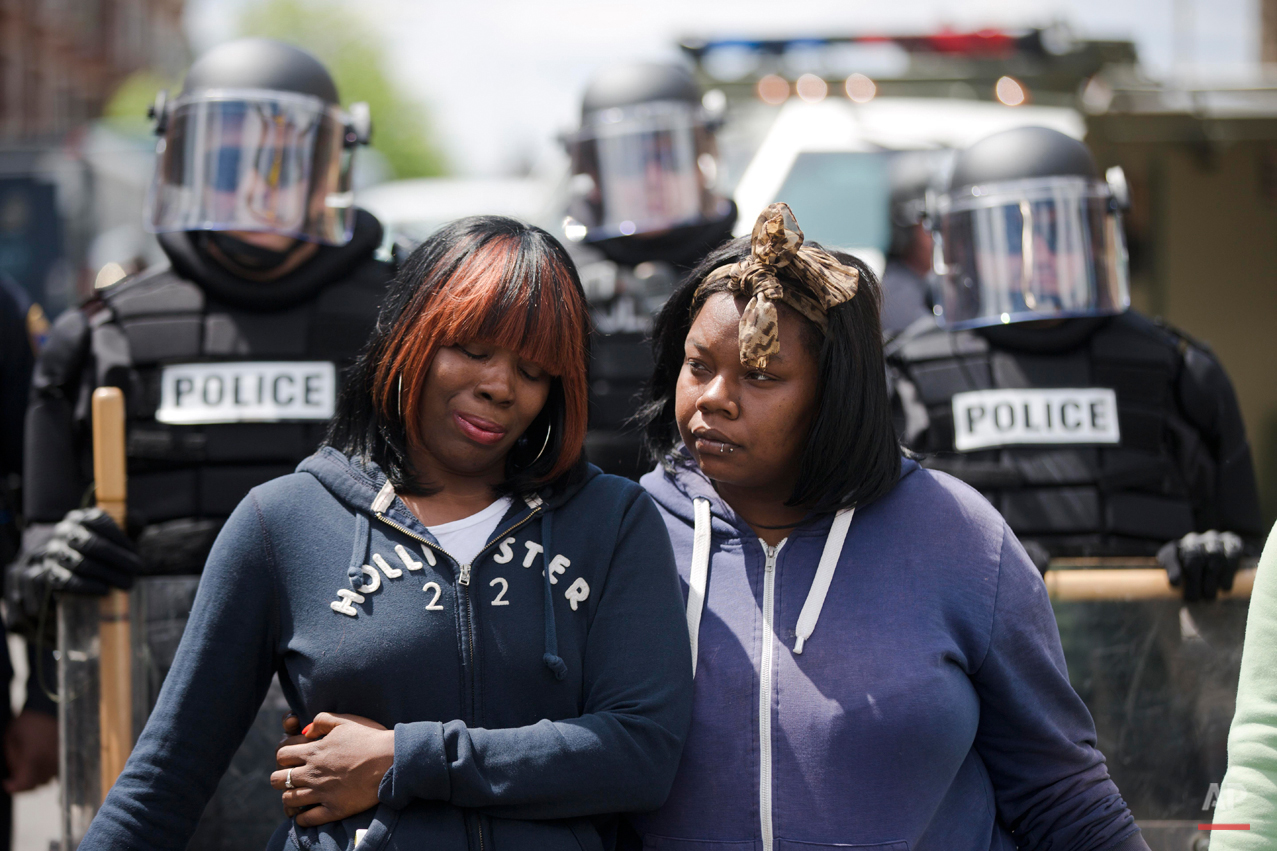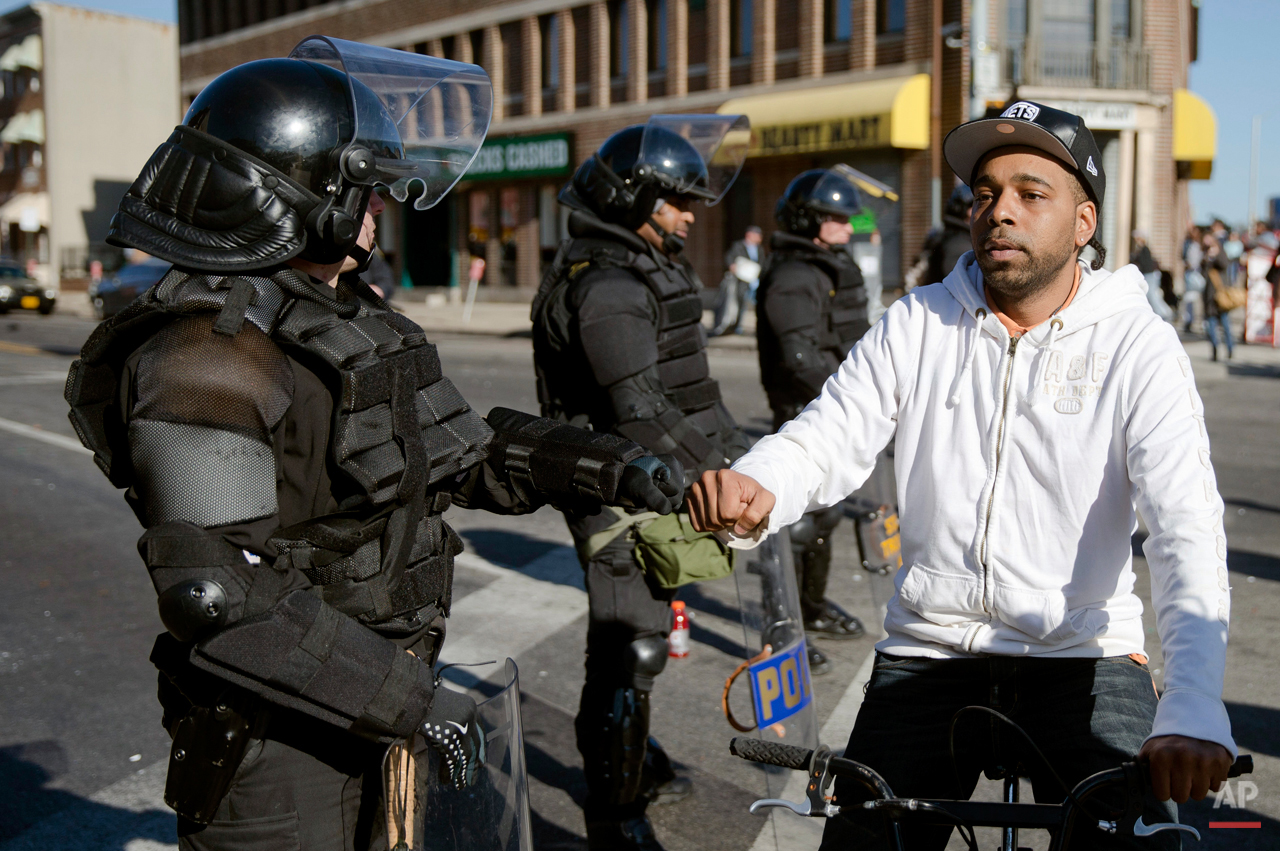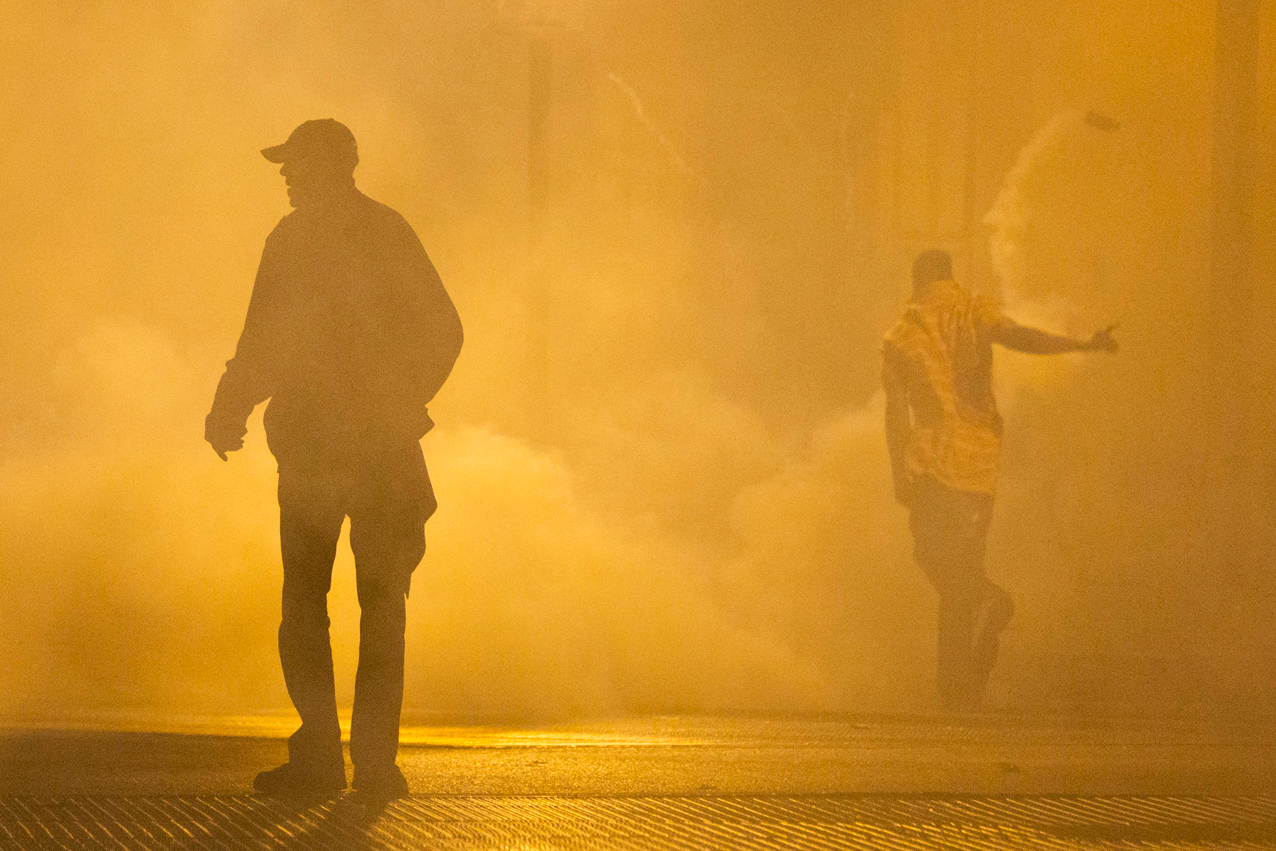Baltimore protests

A line of police behind riot shields hurled tear gas canisters and fired pepper balls at as many as 200 protesters Tuesday night to enforce a citywide curfew, imposed after the worst outbreak of rioting in Baltimore since 1968. Demonstrators threw bottles at police and picked up the canisters and hurled them back at officers. But the crowd rapidly dispersed and was down to just a few dozen people within minutes.
The clash came after a day of high tension but relative peace in Baltimore, as thousands of police officers and National Guardsmen poured in to try to prevent another round of looting and arson like the one that rocked the city on Monday.
It was the first time since the assassination of the Rev. Martin Luther King Jr. in 1968 that the National Guard was called out in Baltimore to quell unrest.
The racially charged violence on Monday was set off by the case of Freddie Gray, a 25-year-old black man who died of a spinal-cord injury under mysterious circumstances while in police custody.
Maryland Gov. Larry Hogan said 2,000 Guardsmen and 1,000 law officers would be in place overnight.
"This combined force will not tolerate violence or looting," he warned.
In a measure of how tense things were on Tuesday, Baltimore was under a 10 p.m.-to-5 a.m. curfew. All public schools were closed. The Baltimore Orioles postponed Tuesday night's game at Camden Yards and — in what may be a first in baseball's 145-year history — announced that Wednesday's game will be closed to the public.
The streets were largely calm all day and into the evening, with only a few scattered arrests.
About 15 minutes after the 10 p.m. curfew took effect, police moved against protesters who remained in the street in the city's Penn North section, near where a CVS pharmacy was looted the day before.
Shortly before the curfew and in a different neighborhood, police arrested three to four juveniles in South Baltimore after people started attacking officers with rocks and bricks, authorities said. At least one officer was reported injured.
Monday's outbreak of looting, arson and rock- and bottle-throwing by mostly black rioters erupted just hours after Gray's funeral. It was the worst such violence in the U.S. since the unrest last year over the death of Michael Brown, the unarmed black 18-year-old shot by a white police officer in Ferguson, Missouri.
At the White House, President Barack Obama called the deaths of several black men around the country at the hands of police "a slow-rolling crisis." But he added that there was "no excuse" for the violence in Baltimore, and said the rioters should be treated as criminals.
"They aren't protesting. They aren't making a statement. They're stealing," Obama said.
Political leaders and residents called the violence a tragedy for the city and lamented the damage done by the rioters to their own neighborhoods.
"I had officers come up to me and say, 'I was born and raised in this city. This makes me cry,'" Baltimore Police Commissioner Anthony Batts said.
Haywood McMorris, manager of the wrecked CVS store, said the destruction didn't make sense: "We work here, man. This is where we stand, and this is where people actually make a living."
But the rioting also brought out a sense of civic pride and responsibility in many Baltimore residents, with hundreds of volunteers turning out to sweep the streets of glass and other debris with brooms and trash bags donated by hardware stores.
Blanca Tapahuasco brought her three sons, ages 2 to 8, from another part of the city to help clean up the brick-and-pavement courtyard outside the CVS.
"We're helping the neighborhood build back up," she said. "This is an encouragement to them to know the rest of the city is not just looking on and wondering what to do."
Some of the same neighborhoods that rose up this week burned for days after the assassination of the Rev. Martin Luther King Jr. 47 years ago. At least six people died then, and some neighborhoods still bear the scars.
Jascy Jones of Baltimore said the sight of National Guardsmen on the street gave her a "very eerie feeling."
"It brought a tear to my eye. Seeing it doesn't feel like the city that I love," she said. "I am glad they're here, but it's hard to watch."
The rioting started in West Baltimore on Monday afternoon and by midnight had spread to East Baltimore and neighborhoods close to downtown and near the baseball stadium.
At least 20 officers were hurt, one person was critically injured in a fire, more than 200 adults and 34 juveniles were arrested, and nearly 150 cars were burned, police said. The governor had no immediate estimate of the damage.
With the city bracing for more trouble, several colleges closed early Tuesday, including Loyola University Maryland, Johns Hopkins University and Towson University.
The violence set off soul-searching among community leaders and others, with some suggesting the unrest was about more than race or the police department — it was about high unemployment, high crime, poor housing, broken-down schools and lack of opportunity in Baltimore's inner-city neighborhoods.
The city of 622,000 is 63 percent black. The mayor, state's attorney, police chief and City Council president are black, as is 48 percent of the police force.
"You look around and see unemployment. Filling out job applications and being turned down because of where you live and your demographic. It's so much bigger than the police department," said Robert Stokes, 36, holding a broom and a dustpan on a corner where some of the looting and vandalism took place.
He added: "This place is a powder keg waiting to explode."
Text from the AP news story, Police clash with Baltimore protesters for a second night, by Amanda Lee Myers & David Dishneau
Spotlight is the blog of AP Images, the world’s largest collection of historical and contemporary photos. AP Images provides instant access to AP’s iconic photos and adds new content every minute of every day from every corner of the world, making it an essential source of photos and graphics for professional image buyers and commercial customers. Whether your needs are for editorial, commercial, or personal use, AP Images has the content and the expert sales team to fulfill your image requirements. Visit apimages.com to learn more.
Written content on this site is not created by the editorial department of AP, unless otherwise noted.
AP Images on Twitter | AP Images on Facebook | AP Images on Google+
Visual artist and Journalist

